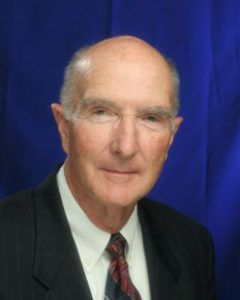 Recent articles in Reflections noted the able assistance CH2M HILL provided to the victims of the Asian tsunami and hurricanes Katrina and Rita. Such efforts have long been a part of the firm’s history and speak well of the legacies its employees create throughout the world. The stories reminded me of a little known but huge contribution the firm made to the citizens of the Milwaukee area during its stewardship of the Water Pollution Abatement Program (WPAP).
Recent articles in Reflections noted the able assistance CH2M HILL provided to the victims of the Asian tsunami and hurricanes Katrina and Rita. Such efforts have long been a part of the firm’s history and speak well of the legacies its employees create throughout the world. The stories reminded me of a little known but huge contribution the firm made to the citizens of the Milwaukee area during its stewardship of the Water Pollution Abatement Program (WPAP).
The Milwaukee River bisects Milwaukee’s downtown and in the 1920s was the focus of many civic celebrations. Boating was prevalent during the balmy summer months, and many historic pictures show ladies in their long dresses and large-brimmed hats seated in open boats enjoying an outing on the river. The river was a remarkable asset.
As the community grew and the river became polluted, that all changed. Buildings were erected along the downtown riverfront, blocking access, and literally turning the city’s back on the river. Huge unbroken brick facades looked down on the dirty debris-clogged waterway. It looked more like an industrial canal than a free-flowing river.
This was the situation when the Program Management Office opened its doors in the summer of 1977. My office looked down on the river, and I often thought of those idyllic scenes from the past and wondered if the city would again embrace the river when we cleaned it up. During a vacation trip to Seattle with our public relations consultant, Norm Paulsen, we were marveling at the bustling activity along the Elliott Bay waterfront, which had just recently been cleaned up by the Seattle Metro project that I managed for many years. We started brainstorming ideas on how to refocus Milwaukee on a cleaned-up river and decided we needed a vision — a plan — that we could show the community’s leaders. We believed that something akin to San Antonio’s famous Riverwalk could be developed through the city.
Upon returning, Norm and I approached Mike Anglea, the GLO regional manager, and suggested that the firm retain a landscape architect to develop a master plan for the downtown riverfront. We argued that since the firm was benefiting hugely from the WPAP, the firm should give something back to the community. Mike got very excited about the prospect but noted that this was going to be an overhead expenditure of some significance. So, we asked our president, Harlan Moyer, for permission to proceed. Harlan immediately saw the benefits that could be derived from such a project and urged us to go ahead. Mike suggested that we retain Bob Beckley, a professor of urban design at the University of Wisconsin-Milwaukee. The four of us worked for several months to prepare a document that outlined a plan that included promenades along the river, marinas, restaurants, waterfront living accommodations, and improved public access at street ends.
 Once the document was complete, we had to convince the community that the idea was worthwhile. Norm persuaded the Greater Milwaukee Committee (GMC), the city’s movers and shakers, to adopt the plan as its project for the year. We presented the idea to Mayor Henry Maier who saw the potential and directed that future city projects along the river be designed to incorporate elements of the master plan. Improvements began occurring during the first few years, as the GMC was able to convince the developer of a proposed major office building adjacent to the river to redo his plans to include a promenade along the riverfront. Owners of existing buildings also were persuaded to remodel their riverfront facades to provide for promenades and waterfront restaurants.
Once the document was complete, we had to convince the community that the idea was worthwhile. Norm persuaded the Greater Milwaukee Committee (GMC), the city’s movers and shakers, to adopt the plan as its project for the year. We presented the idea to Mayor Henry Maier who saw the potential and directed that future city projects along the river be designed to incorporate elements of the master plan. Improvements began occurring during the first few years, as the GMC was able to convince the developer of a proposed major office building adjacent to the river to redo his plans to include a promenade along the riverfront. Owners of existing buildings also were persuaded to remodel their riverfront facades to provide for promenades and waterfront restaurants.

Over the ensuing two decades, condominiums were constructed along the river upstream from downtown, all featuring their own docks for private boats. A major housing development was constructed along the river with its own promenade, a marina was built downtown, a fine riverfront restaurant was included in the restoration of an historic downtown building, old riverfront warehouses in the historic Third Ward are being converted to condos and lofts that feature views of the river, and tour boats are providing dinner cruises on the river and harbor during the summer months. All of this happened because of the huge success of WPAP. The Milwaukee River is again a civic asset.
Last summer, Jean and I visited Milwaukee and saw the developments noted above and shared the excitement that many of our friends felt for the river’s re-emergence as a civic asset. It was extremely gratifying to realize that CH2M HILL had provided the vision and was the catalyst for a remarkable renaissance in urban living in a wonderful old city.
CH2M HILL does great projects; and our employees are good citizens, too. That’s a testament to a wonderful firm.
